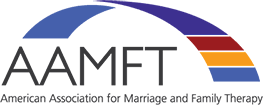Childhood and adolescence are periods of rapid physical, emotional, and social changes, and these changes can cause or aggravate behavioral health conditions. Severe mental illnesses, such as schizophrenia or pediatric bipolar disorder, and substance use disorders tend to first present during adolescence with approximately half of all cases of behavioral health disorders presenting by age 14 and going undetected or untreated.
Studies on the behavioral health workforce of the United States repeatedly show low proportions of providers specializing in the treatment of children and adolescents, as well as geographic maldistribution of said workforce. This lack of access to care may be exacerbated by the COVID-19 pandemic, during which a transition to distance learning could disrupt students’ access to behavioral health providers stationed at schools.
Previous workforce studies explored formal subspecializations indicated by specialty board certifications, such as physicians holding a certification in Child and Adolescent Psychiatry from the American Board of Psychiatry and Neurology or psychologists holding a certification in Clinical Child and Adolescent Psychology from the American Board of Professional Psychology. However, providers without such a specialty credential may be treating children and adolescents. Provision of specialty care to children and adolescents by other, less researched behavioral health occupations without formal certification, such as clinical social workers (CSWs), mental health counselors (MHCs), and marriage & family therapists (MFTs), may be underrepresented and underestimated in current studies. A study extrapolating data gathered by minimum data-set for a nationally-representative sample of these workforces 12 may identify such nationwide underestimation.
This project will collect primary data from four, clinical-level behavioral health provider populations: health service psychologists, CSWs, MFTs, and MHCs.The BHWRC will partner with investigators at the American Psychological Association (APA) to conduct a new survey of health service psychologists to inform nationally representative estimates on the clinical child and adolescent psychology workforce.
Publications
After surveying 842 psychologists from all over the country, only 25.7% identified as a child and adolescent psychologist, highlighting the continued need for addressing the child and adolescent psychologist workforce shortage. Reducing this shortage, along with other measures, can work to increase access to mental health care for children and adolescents. Policies that narrow the gap between supply and demand, such as increasing training opportunities and addressing financial and insurance barriers to care for families, will be critically important for ensuring the psychologist workforce is both adequately sized, and prepared to meet the behavioral health needs of children and adolescents.





